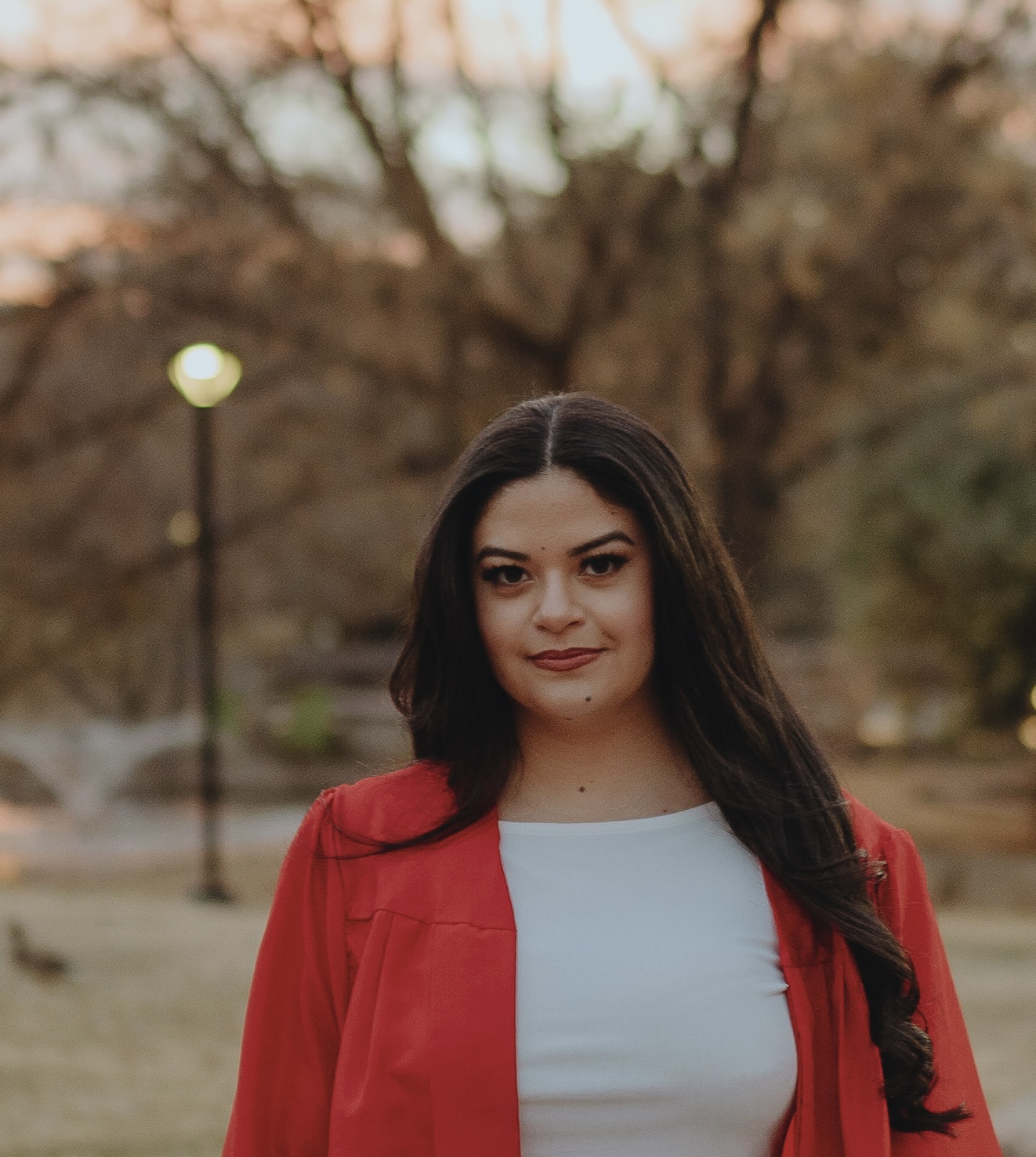Two engineering students honored with National Science Foundation Graduate Research Fellowships
May 15, 2024 - by Kim Delker
Two students in the School of Engineering are recipients of the National Science Foundation Graduate Research Fellowship (NSF GRFP).

Ashley Apodaca-Sparks, a master’s student in the in the Gerald May Department of Civil, Construction and Environmental Engineering, and Mega Frost, a Ph.D. student in the Optical Science and Engineering Program, received awards.
The NSF GRFP was created to ensure the quality, vitality and diversity of the scientific and engineering workforce of the United States. GRFP seeks to broaden participation in science and engineering of underrepresented groups, including women, minorities, persons with disabilities and veterans. The five-year fellowship provides three years of financial support with an annual stipend.
Apodaca-Sparks is currently working on the development of a field sensor for uranium detection in natural water systems. She said that there is a need for an easy-to-use and affordable field sensor, especially in New Mexico, which has a large presence of abandoned uranium mines.
“The communities affected have to rely on costly and often out-of-reach methods to get information about the safety of their water, and my hope is to help provide a tool that can provide them with this information directly,” she said.
Additionally, she works on Shared.Futures, an ArtScience collaborative led by Professor Yolanda Lin from the UNM Department of Geography and Environmental Studies. Apodaca-Sparks works with others on the project to connect artists and researchers through a fellowship program where they collaborate to create artwork communicating scientific perspectives.
“I am incredibly honored to have received this award, and I know it would not have been possible without the many people who have supported and inspired me, specifically professors José Cerrato, Anjali Mulchandani, Yolanda Lin and Andreas Hernandez, as well as my family and friends,” Apodaca-Sparks said. “I have always been passionate about pursuing a higher education, and this fellowship will help me achieve this goal.”
Long term, she said she would like to continue with scientific research and promoting science communication through mediums like art.

“For many, science and engineering can seem unattainable, but I believe artwork has the capacity to bridge the divide between researchers and the larger community,” she said.
Frost’s area of research is in III-V semiconductor crystal growth, particularly the development of antimonide-based structures on silicon for applications in optoelectronics.
“Receiving the NSF GRFP is an achievement that I am both incredibly honored and humbled to receive,” Frost said. “It is a prestigious award that distinguishes researchers that the NSF believes to be major contributors to the future of science, and it will be a distinction that will aid me in several of my future endeavors.”
Future plans for Frost include either pursuing a faculty research position or working as a researcher at a national research laboratory such as Sandia National Laboratories.
“My desire is to continue working on cutting-edge research to bring new and exciting technology to the industry and to never stop contributing to the wealth of human knowledge,” Frost said. “As the need for semiconductor manufacturing capabilities within the United States increases, I understand that my continued work in this field will remain relevant and necessary.”
Three students in the School of Engineering received honorable mention for the award: Kritan Subedi and Paige Haley, both master’s students in the Gerald May Department of Civil, Construction and Environmental Engineering; and Andrew Geyco, who received a bachelor’s degree in computer science from UNM.
In addition, two UNM Engineering alums received fellowships: Levi Premer, who received a bachelor’s degree in mechanical engineering from UNM and is now at Purdue University; and Shantae C. Gallegos, who received a biomedical engineering degree from UNM who is now at the University of Colorado at Boulder.
A full list of students who received the fellowship from UNM and around the country can be found on the National Science Foundation website.
